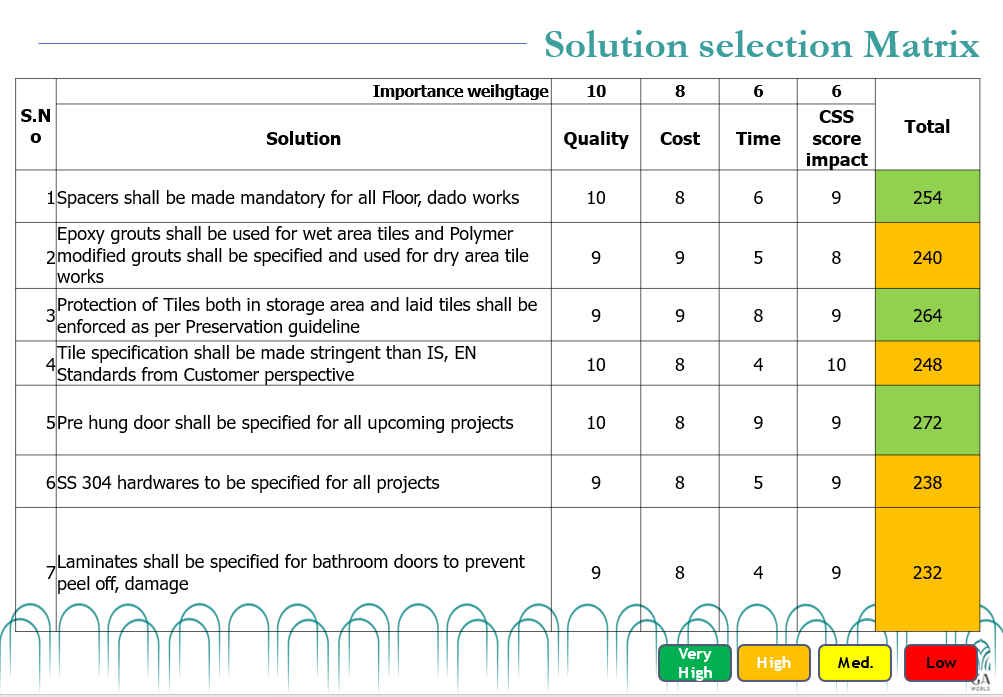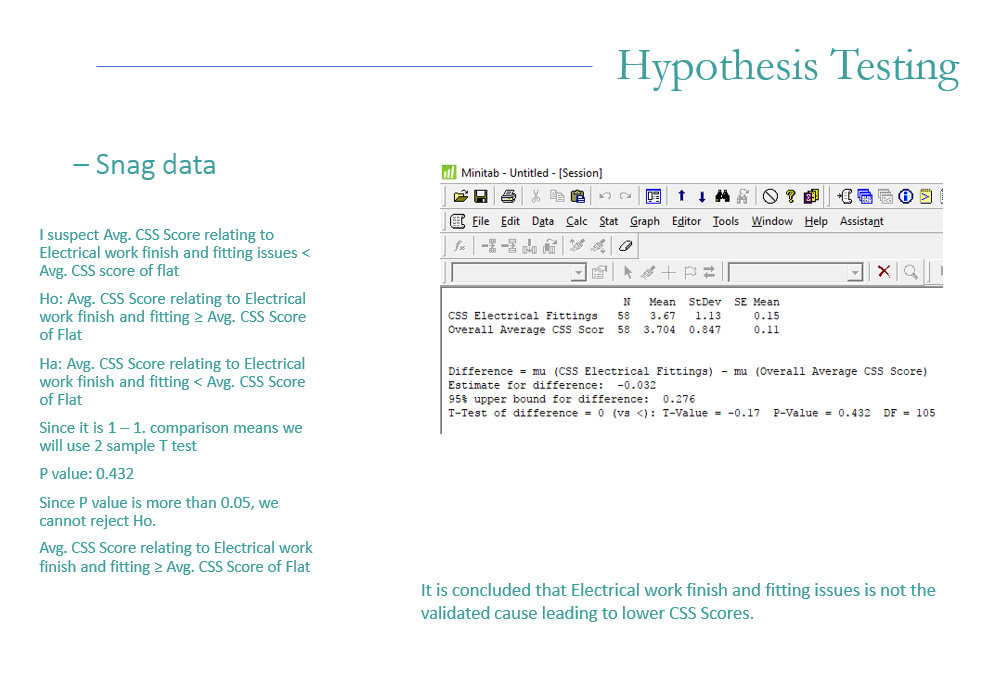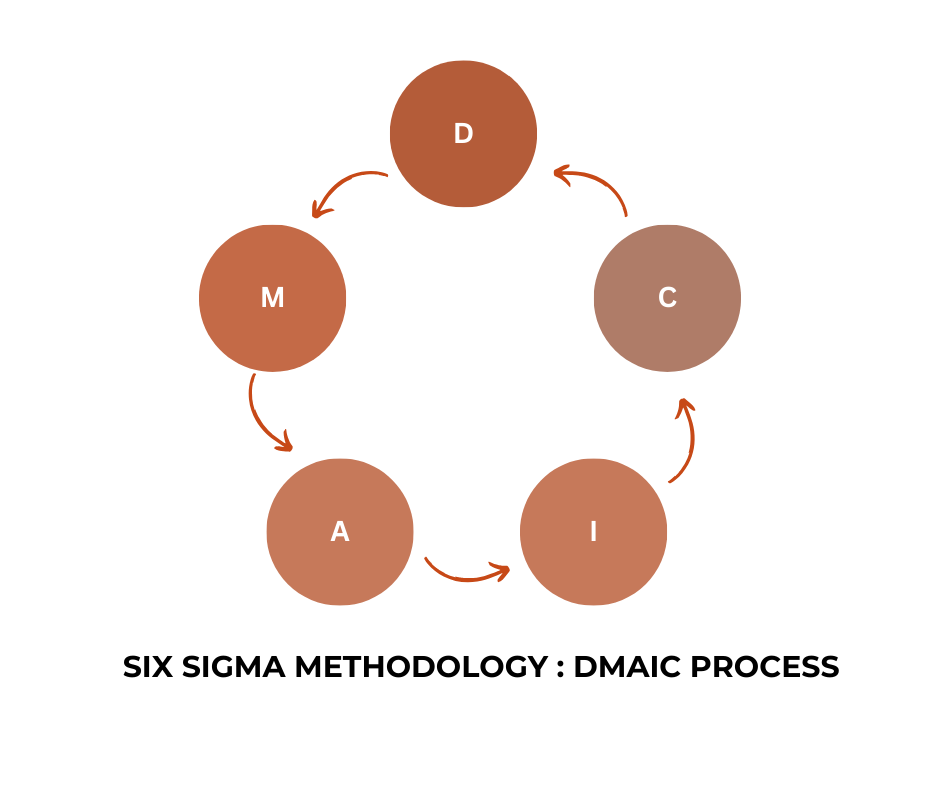The real estate industry thrives on movement. Deals are negotiated, properties change hands, tenants come and go, and construction crews hammer away. But beneath this bustling surface, an insidious monster lurks- inefficiency. From vacant units draining your cash flow to delays plaguing construction projects, these hidden flaws eat away at your profitability like termites at a foundation. But fret not, for there exists a powerful tool capable of wielding data-driven precision to combat this inefficiency paradox: Six Sigma. Six Sigma is a data-driven quality management methodology focused on continuous improvement and minimizing defects. By applying statistical analysis and problem-solving tools, Six Sigma helps organizations achieve near-perfect quality and maximize efficiency. This article delves into key strategies and processes employed in the Six Sigma methodology to improve efficiency in real estate project delivery, enhancing profits in the construction industry.
Understanding Six Sigma Methodology
Six Sigma methodology, originally developed in the manufacturing sector, has found versatile applications, particularly in the real estate and construction industry. The methodology revolves around the core principles of minimizing variability, reducing defects, and optimizing processes. In real estate, where precision and adherence to timelines are crucial, Six Sigma offers a structured approach to continuous improvement. By understanding the nuances of this methodology, real estate professionals can unlock new avenues for enhancing project outcomes.
Implementing Six Sigma: DMAIC Process
The DMAIC process(Define, Measure, Analyze, Improve, Control) is the linchpin of Six Sigma implementation, offering a structured framework to drive continuous improvement in real estate project delivery. Each phase plays a crucial role in enhancing project outcomes, ensuring precision, and optimizing processes for maximum efficiency.
A. Define Phase: Clearly Outlining Project Goals and Critical Success Factors
In the Define phase, real estate professionals articulate project goals and critical success factors. This phase serves as the foundation, establishing a clear roadmap for the project’s direction. Defining objectives with utmost clarity ensures that all stakeholders share a common understanding of the project’s scope, facilitating collaboration and reducing the risk of misunderstandings as the project progresses.
B. Measure Phase: Collecting Relevant Data for Process Evaluation
The Measure phase focuses on the systematic collection of relevant data to evaluate existing processes within a real estate project. Accurate measurement is paramount in identifying performance metrics, assessing the current state of affairs, and establishing a baseline for future improvements. This data-driven approach allows for an objective analysis, providing insights into areas that may require refinement or optimization.
C. Analyze Phase: Identifying Root Causes of Inefficiencies
In the analysis phase of the DMAIC process, the spotlight turns towards delving into the intricacies of the collected data. This involves identifying the root causes of inefficiencies, bottlenecks, or deviations from the desired project outcomes. Armed with data-driven insights, real estate professionals can pinpoint areas needing attention. By understanding the underlying causes of challenges, they pave the way for targeted improvements in subsequent phases.
D. Improve Phase: Implementing Changes for Enhanced Efficiency
The Improvement phase marks the proactive stage of the DMAIC process, where real estate professionals implement changes based on the insights gained from the analysis. This stage involves strategic decision-making and the application of innovative solutions to enhance project efficiency. Whether streamlining workflows, introducing advanced technologies, or optimizing resource allocation, the Improvement phase is the engine that propels the project towards higher levels of productivity and success.
E. Control Phase: Ensuring Sustained Improvements Over Time
The final phase, Control, is a critical component that ensures the longevity of improvements made during the DMAIC process. Real estate projects are dynamic, and changes introduced in the Improvement phase must be sustained. The Control phase involves implementing monitoring mechanisms, performance metrics, and feedback loops. This ongoing evaluation helps in promptly identifying any deviations from the optimized processes, allowing real estate professionals to take corrective action swiftly and maintain the project’s enhanced efficiency over the long term.
Learn about Real Estate Feasibility – Massing Studies
Quality Improvement
Quality improvement lies at the heart of Six Sigma’s impact on the real estate sector. It represents a dedicated commitment to elevating standards and ensuring that every aspect of a construction project aligns with the highest levels of excellence. Six Sigma methodology achieves this by meticulously analyzing each phase, from the initial planning stages to the final execution.
In the pursuit of quality improvement, Six Sigma practitioners scrutinize processes, identify potential areas for enhancement, and implement strategic changes. This comprehensive approach reduces defects, errors, and delays, resulting in a final project that seamlessly aligns with client expectations. The commitment to quality improvement goes beyond mere rectification; it establishes a culture of excellence that permeates every facet of real estate project delivery. By incorporating Six Sigma principles into the DNA of a project, real estate professionals not only meet but exceed industry standards, creating a lasting impact on client satisfaction and industry reputation.
Efficiency Enhancement
Efficiency is a cornerstone of success in the construction industry, where adherence to timelines is synonymous with profitability. Six Sigma, through its systematic and data-driven approach, becomes a catalyst for efficiency enhancement in real estate projects. This methodology is not a one-size-fits-all solution; Rather, it offers a tailored approach to streamline processes, identify and eliminate bottlenecks, and accelerate project timelines.
The result of efficiency enhancement through the Six Sigma methodology is twofold. Firstly, there is a noticeable reduction in costs as redundant steps and inefficiencies are eradicated. Secondly, and perhaps more importantly, there is a significant increase in overall productivity. Real estate developers embracing Six Sigma principles witness projects with smoother workflows, reliable timelines, and a marked improvement in project efficiency. This newfound efficiency not only positively impacts the bottom line but also enhances the reputation of real estate professionals in delivering projects that meet or exceed expectations. As the construction industry continues to evolve, efficiency becomes a competitive advantage, and Six Sigma stands as a powerful tool for achieving and sustaining that advantage.
Explore on Construction technology- Shift and Impact
Six Sigma Calculator
In conjunction with the Six Sigma methodology, the Six Sigma Calculator plays a pivotal role in quantifying and assessing the efficiency improvements brought about by the DMAIC process. This tool utilizes statistical analysis to measure the process sigma level, providing a numerical representation of the project’s performance. The calculator considers the number of defects per million opportunities, offering a clear picture of the project’s current state and the impact of implemented improvements. By incorporating key metrics such as process capability indices (Cpk) and sigma levels, real estate professionals can objectively evaluate the success of their efficiency enhancement initiatives. The Six Sigma Calculator serves as a compass, guiding stakeholders towards data-driven decision-making and reinforcing the commitment to continuous improvement. It empowers project teams to track progress, identify areas for further refinement, and quantitatively showcase the tangible benefits of integrating Six Sigma principles into real estate project delivery.

Get your Six Sigma Calculator now

Case Study: Green Belt Project
The integration of the Six Sigma methodology has proven transformative, notably in the exemplary execution of the DMAIC process within a “Green Belt project.” This success story underscores the significance of qualitative analysis, employing tools such as the Cause-effect matrix and Cause-analysis table. These methodologies facilitated a meticulous approach to solution selection, culminating in the development of a comprehensive full-scale implementation plan. The project not only streamlined real estate project delivery but also served as a guideline for the construction industry, presenting the tangible benefits of employing the Six Sigma methodology in optimizing complex processes.
Also learn Definitions : Real Estate and Construction Terminologies
Overcoming Challenges
Implementing Six Sigma in the realm of real estate is not without its share of challenges. Resistance to change, data availability, and stakeholder alignment often pose significant hurdles. However, the triumph of the “Green Belt project” illuminates a pathway to overcoming these obstacles. Effective communication strategies, adept leadership, and a phased implementation approach emerged as key factors in navigating complexities successfully. By addressing challenges head-on and tailoring the DMAIC process to suit the nuances of real estate, industry professionals can effectively harness the power of Six Sigma to enhance efficiency in project delivery.


Get Six Sigma Black Belt Project details here

Future Trends
Looking ahead, the future of real estate project delivery is intrinsically tied to the integration of Six Sigma as a standard practice. Anticipated trends include the widespread adoption of DMAIC processes across diverse projects, driven by the industry’s growing demand for efficiency and cost-effectiveness. The evolution of Six Sigma is also expected to encompass the incorporation of advanced analytics and emerging technologies, further enhancing its efficacy in real estate processes. This future-oriented perspective foresees a data-driven and streamlined approach to construction, solidifying Six Sigma as an indispensable methodology for achieving excellence in the dynamic and competitive construction landscape.
For more real estate related blogs, click here





